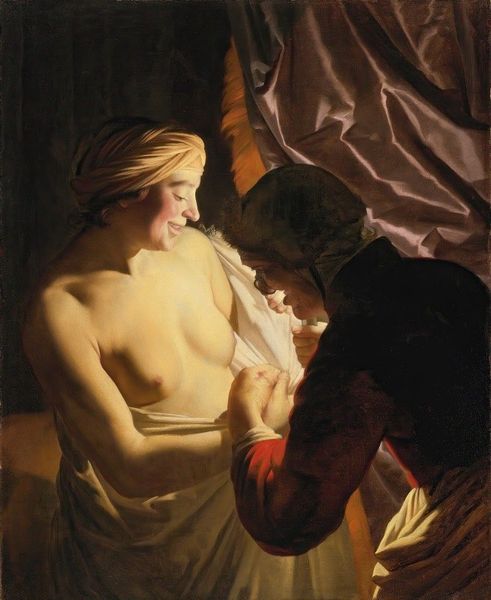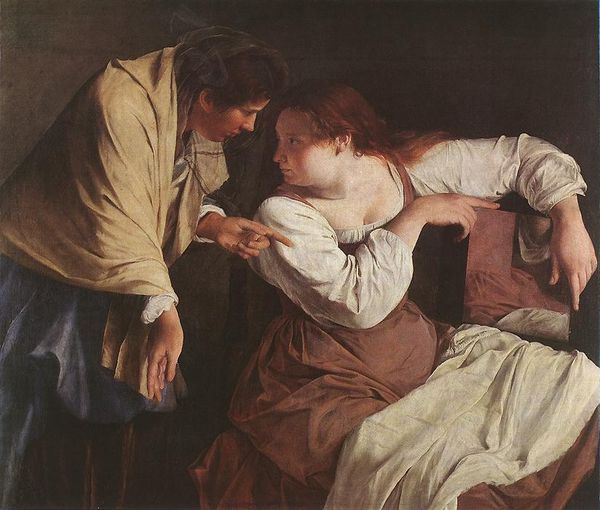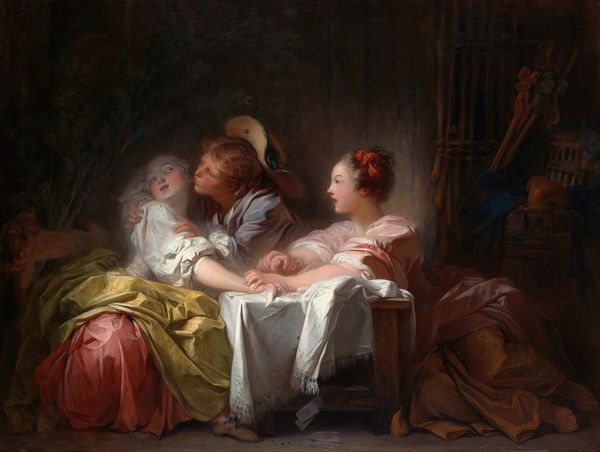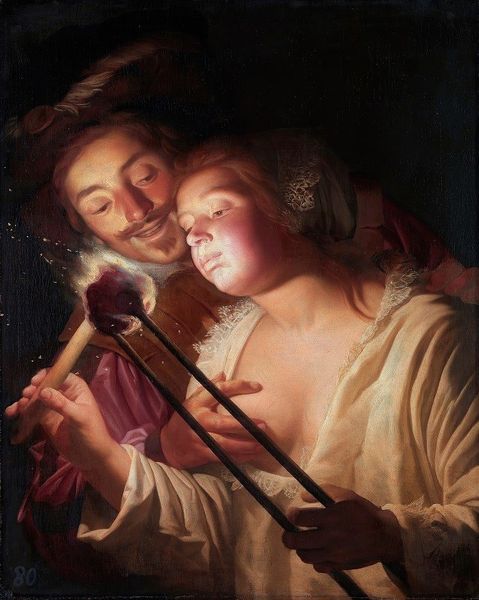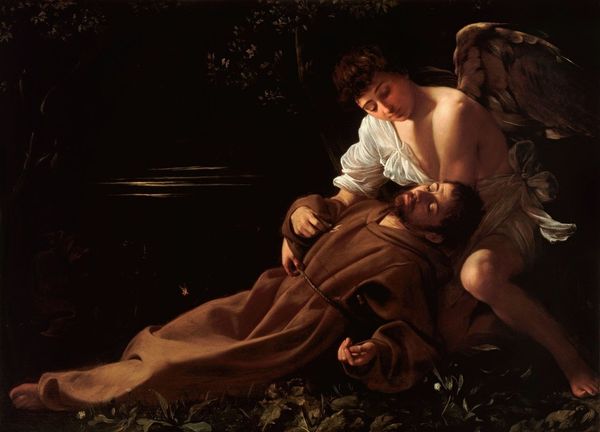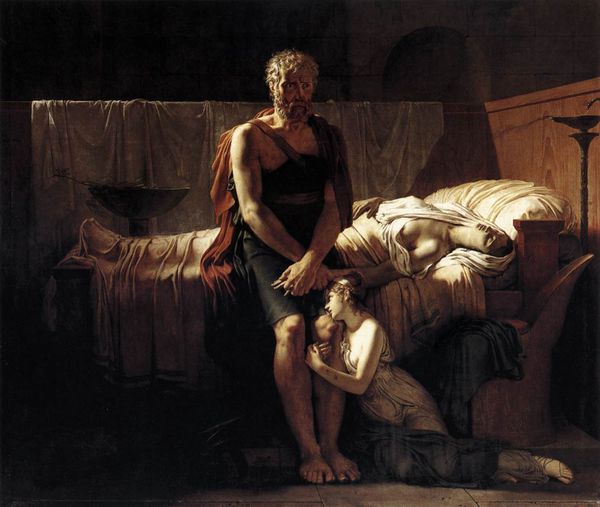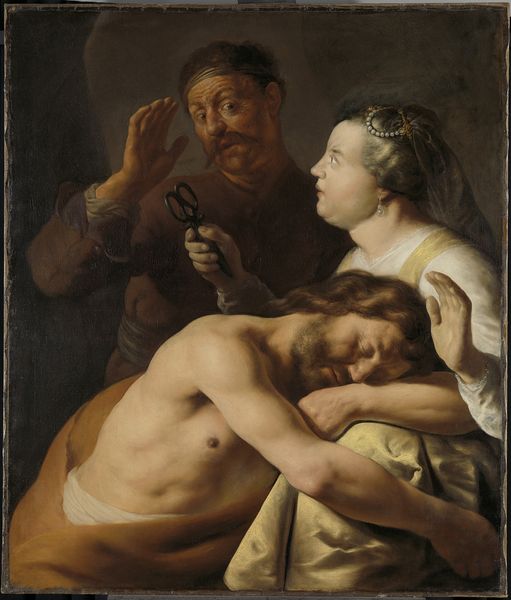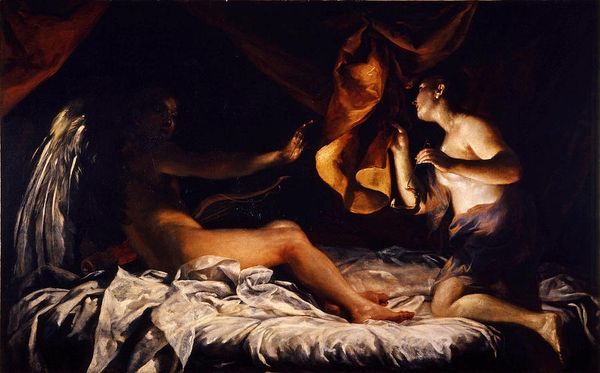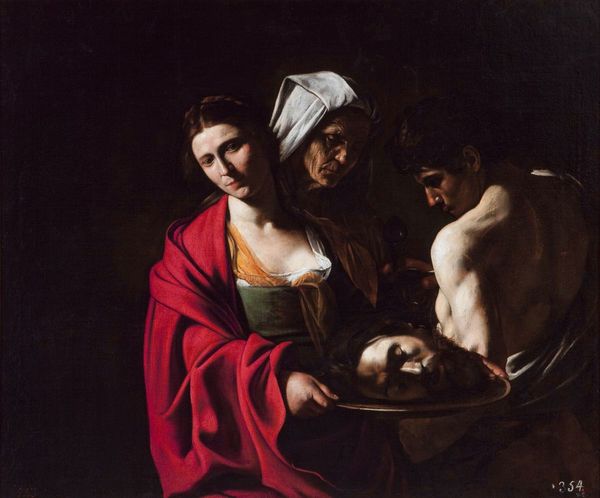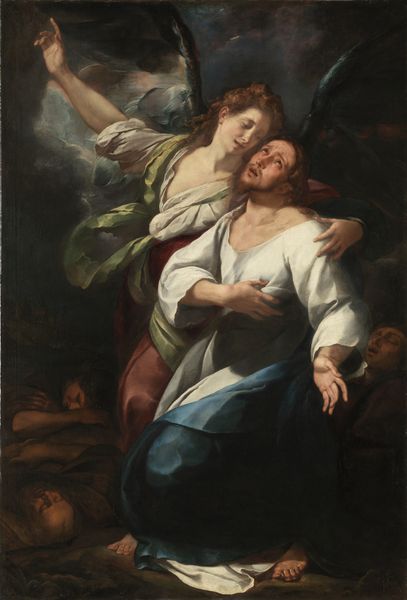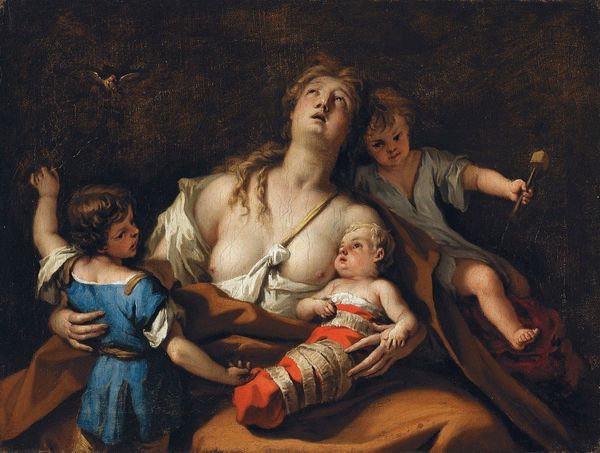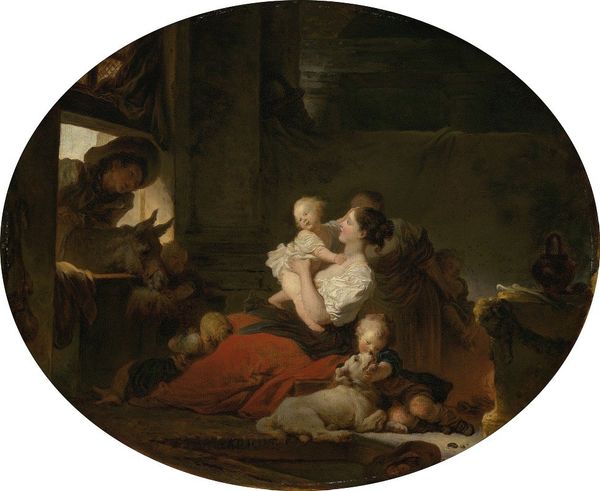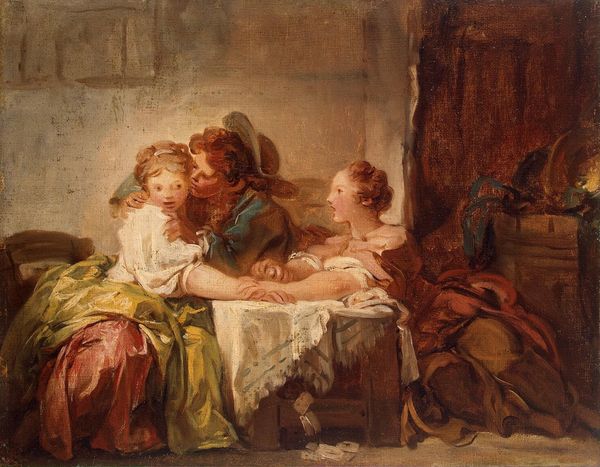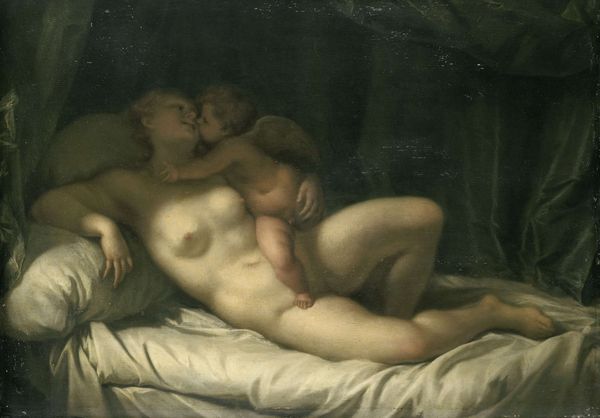
painting, oil-paint
#
narrative-art
#
baroque
#
painting
#
oil-paint
#
figuration
#
genre-painting
#
history-painting
Copyright: Public Domain: Artvee
Editor: We’re looking at "Samson and Delilah" by Gerard van Honthorst, made around 1616 with oil paints. What immediately strikes me is the almost cinematic drama, everything is lit with this very harsh, almost theatrical spotlight. What do you make of this depiction of the biblical scene? Curator: Ah, Honthorst! Nicknamed "Gherardo delle Notti" in Italy—Gerard of the Nights—for his masterful use of *chiaroscuro*, that play of light and dark. It’s interesting, isn’t it, how he's not necessarily aiming for historical accuracy, but for maximum emotional impact. The candle, the single source, illuminates this treachery unfolding. Doesn't it feel like we're intruding on something intimate, almost voyeuristic? Editor: Definitely voyeuristic. Delilah almost seems to be concentrating on her work as she cuts his hair. There’s an intimacy that feels really uneasy given what’s happening. Curator: Precisely. Honthorst masterfully juxtaposes beauty with betrayal, sleep with vigilance. Consider that older figure, finger raised, commanding silence. It's like a stage direction, a carefully orchestrated moment of perfidy captured forever. Is there something about his theatrical staging you find compelling? Editor: Absolutely. It is interesting to view the single candle burning that represents betrayal under darkness with dramatic spotlight. Curator: Think about what candlelight would have represented at that time - limited technology. The focus, composition, is superb. I have come away considering more profoundly the story of deceit between Samson and Delilah and how it has had such a lasting impact over centuries. Editor: I agree; the intimacy combined with stark lighting really elevates this biblical narrative to something intensely human.
Comments
No comments
Be the first to comment and join the conversation on the ultimate creative platform.
